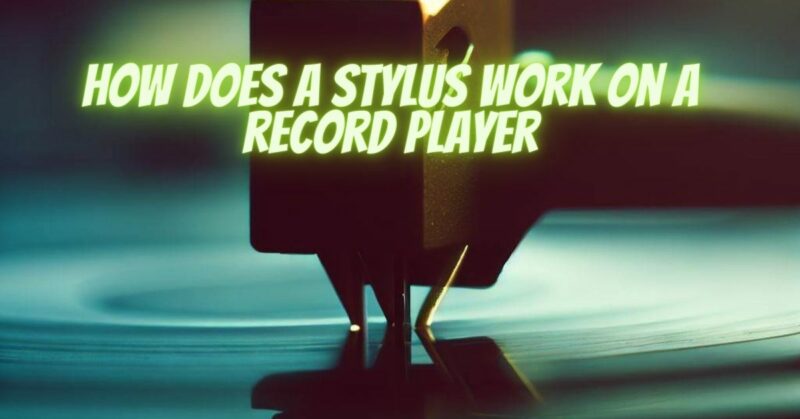The stylus is a tiny but crucial component of a record player that comes into direct contact with the grooves of a vinyl record. Its role is to accurately track the grooves and translate the physical movements into audible sound. In this article, we will explore the inner workings of a stylus and how it operates to deliver the music hidden within the record’s grooves.
- Physical Construction:
The stylus, also known as the needle, is typically made of a small, diamond-tipped or sapphire-tipped rod. Its tip is carefully shaped to match the contours of the record groove. The stylus is mounted on a cantilever, a thin and flexible rod that acts as a suspension system, allowing the stylus to move freely along the groove.
- Tracking the Grooves:
As the record spins, the stylus is placed gently on the surface of the vinyl. The groove consists of a series of ridges and valleys that correspond to the audio signal. The stylus is designed to ride along these grooves, tracing the physical contours with precision.
- Translating Mechanical Movements to Electrical Signals:
As the stylus moves along the grooves, it encounters variations in depth and width, corresponding to the audio information. The stylus reacts to these variations by physically vibrating, mimicking the shape of the groove. These mechanical vibrations are then transmitted through the cantilever to the cartridge, which houses the stylus assembly.
- Cartridge and Signal Generation:
The cartridge plays a vital role in the stylus-to-sound transformation process. Inside the cartridge, magnets and coils work together to generate electrical signals. The movement of the stylus in response to the groove contours creates variations in the magnetic field within the cartridge. These variations induce electrical currents in the coils, generating an analog representation of the audio signal.
- Amplification and Audio Output:
The electrical signals generated by the cartridge are relatively weak. To be audible, they need to be amplified. The amplified signals are then sent to the speakers or headphones, where they are transformed back into sound waves that we can hear. The stylus’s ability to accurately track the grooves ensures faithful reproduction of the recorded music, capturing the nuances and details of the original performance.
- Care and Maintenance:
Due to its delicate nature and continuous contact with the record’s grooves, the stylus requires proper care and maintenance. Regular cleaning and inspection are essential to remove accumulated dust and debris, ensuring optimal performance and preventing damage to both the stylus and the records.
Conclusion:
The stylus is a remarkable component of a record player that plays a pivotal role in the reproduction of sound from vinyl records. By delicately tracking the grooves and converting the physical movements into electrical signals, the stylus allows us to experience the music encoded on the record. Understanding the mechanics behind the stylus helps us appreciate the intricate process by which a simple needle can unlock the musical magic hidden within the vinyl grooves. So, the next time you listen to your favorite vinyl record, take a moment to marvel at the precision and ingenuity of the stylus as it faithfully delivers the music to your ears.


